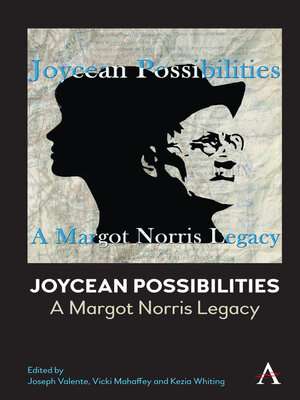
Sign up to save your library
With an OverDrive account, you can save your favorite libraries for at-a-glance information about availability. Find out more about OverDrive accounts.
Find this title in Libby, the library reading app by OverDrive.



Search for a digital library with this title
Title found at these libraries:
| Library Name | Distance |
|---|---|
| Loading... |
This volume proposes to honor the trenchant, influential scholarship of Professor Margot Norris in essays that amplify her illumination of Joyce's oeuvre. The common denominator running through her work is her openness to Joyce's various modes of innovation; she pioneered alternative ways of regarding his fiction, the readers it addresses, the narrative and generic forms it alters, the world to which it refers, and the nature of the socio-historical status quo it exposes. These categories anchor and organize the collection: Joyce's textual plurivalence, formal innovations, possible worlds, emergent histories (including those of women), and variegated readerships.
|This dedicated volume proposes to honor the rich, varied, trenchant, and tremendously influential scholarship of Professor Margot Norris in a series of essays amplifying her illumination of Joyce's literary oeuvre along with several prominent lines she introduced and investigated. Our title is intended to mark the common denominator running, like Ariadne's thread, throughout Professor Norris' many-sided explorations of Joyce's labyrinth. For Professor Norris, the quiddity of Joyce's work, its elusive whatness, resides in its secretion of multiple what elses, its opening up of alternative ways of regarding the novels themselves, the readers they address, the narrative or generic forms they destabilize, the world to which they refer, and the heritages they tap. These five categories, in fact—textual plurivalence, formal innovations, possible worlds, emergent histories, and variegated readerships—serve as anchoring points of the collection, each corresponding with one of the significant projects delineating Professor Norris' esteemed career. Prominent Joycean, Modernist, and Irish study scholars of different nations and generations supply the essays under each heading.
The first critical section, the textual dimension, will engage with Professor Norris' exemplary vindication of the hermeneutics of suspicion in her monograph, Suspicious Readings of Joyce's Dubliners. Joseph Valente, Kezia Whiting and Beryl Schlossman will be toiling in this particular vineyard. The second section, the readerly dimension, will take up Professor Norris' most recent book, Virgin and Veteran Readings of Ulysses, where she elaborates how the stylistic iridescence that Hugh Kenner identified as essential to Joyce's writing likewise operates with shifts in the experience (in every sense of the term) of the reader, and how Joyce inscribes that shimmer of interpretive possibility directly into the text itself. Michael Groden, Ellen Carol Jones, and Austin Briggs each contribute an essay on this topic. The third section, the narratological dimension, grows out of Professor Norris' attention to Joyce's experiments in narrative and, more broadly, symbolic structure, beginning with her first book on Joyce, The Decentered Universe of Finnegans Wake. Derek Attridge and Valerie Benejan are featured in this subdivision. The fourth section, on alternative realities, enters forthrightly into dialogue with Professor Norris' recent essays that usher the postmodern "possible worlds theory '' into the orbit of Joyce studies. Gregory Castle, Marilyn Reizbaum and Paul Saint-Amour extend the application of this paradigm to Ulysses and Finnegans Wake respectively. Whereas the first section of the volume deals with the importance of subtext in Professor Norris' exegetical achievements, the final grouping deals with sub-context, with moments of buried history of the sort Professor Norris addresses in her book, Joyce's Web. The essayists developing this approach include Maud Ellmann, Ann Fogarty, Michael Gillespie, and Margot Backus.
...






